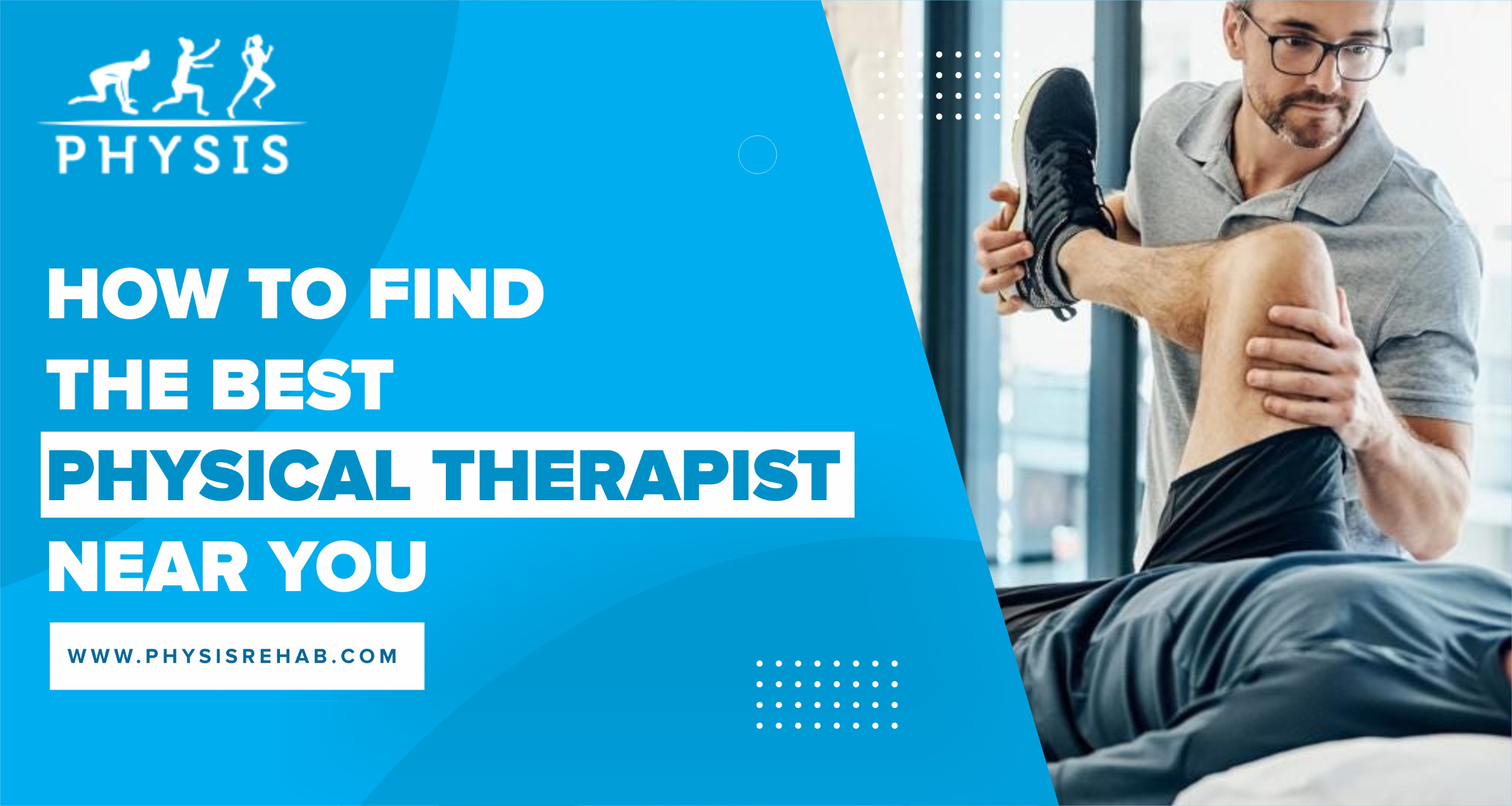How to Find the Best Physical Therapist Near You
Finding the right physical therapist is vital for effective recovery and overall well-being. A qualified therapist can help alleviate pain, restore mobility, and enhance your quality of life. Today, we are overwhelmed by options. It is important to have a comprehensive approach to make an informed decision. This blog helps you identify and choose the ideal physical therapist near you.
1. Understand Your Specific Needs
Before beginning your search, it’s crucial to identify your specific health concerns. Physical therapists often specialize in various areas, including:
- Orthopedics: Focuses on musculoskeletal injuries.
- Neurology: Deals with neurological disorders.
- Sports Medicine: Caters to sports-related injuries and targeted rehabilitation to enhance performance
- Pediatrics: Specializes in treating children.
By understanding your specific needs, you can zero in on specialist therapists to address your specific needs.
2. Seek Recommendations
Personal referrals can be invaluable. This is the most authentic source of information as they share their first-hand experience with you. Consider the following sources:
- Healthcare Providers: Your primary care physician or specialist can recommend reputable therapists.
- Friends and Family: Personal experiences from trusted individuals can guide your choice.
- Online Reviews: Websites like Google provide patient reviews and ratings of physical therapists.
3. Verify Credentials
Ensure the therapist is licensed and holds the necessary credentials. In the United States, the American Physical Therapy Association (APTA) offers a “Find a PT” directory, listing licensed professionals.
4. Evaluate Experience
It’s all about relevance. Experience plays a significant role in effective treatment. Inquire about the therapist’s experience with conditions similar to yours and their success rates. Some clinics like Physis Physical Therapy use a more functional and causative approach to treatment. At times, the focus of the treatment is local and limited to a single joint. A functional approach to treatment considers the biomechanics, movement patterns and interplay of different body regions which is how our body works as a whole. It results in long term relief, improved performance and reduces injury risk.
5. Consider Convenience
Location and availability are crucial for consistent therapy sessions. Choose a clinic that is easily accessible and offers appointment times that fit your schedule.
6. Assess the Facility
Visit the clinic to evaluate:
- Cleanliness: A clean environment reflects professionalism.
- Equipment: Modern and well-maintained equipment can enhance treatment effectiveness.
- Staff Interaction: Friendly and supportive staff can make your therapy experience more pleasant.
7. Discuss Treatment Approaches
Different therapists may employ various treatment methodologies. Ensure their approach aligns with your preferences and comfort level.
8. Understand Costs and Insurance Coverage
Clarify the costs involved and whether the clinic accepts your insurance. Some clinics like Physis Rehab, operate on a Direct Pay with Insurance Reimbursement where the provider is out -of-network but still bills the insurance company on behalf of the patient. In this model the insurance reimburses the provider and the patient is only responsible for the co-insurance.
9. Trust Your Instincts
Your comfort and trust in the therapist are paramount. If something doesn’t feel right, consider exploring other options.
10. Explore Telehealth Options
In today’s digital age, many clinics offer telehealth services, providing flexibility and convenience, especially for those with tight schedules or mobility issues.
Conclusion
Selecting the right physical therapist involves careful consideration of your specific needs, thorough research, and trusting your instincts. By following these steps, you can find a qualified professional who will guide you on your path to recovery and improved health.
FAQs
Q: How do I know if a physical therapist is licensed?
A: You can verify a therapist’s license through state licensing boards or professional associations like the American Physical Therapy Association’s “Find a PT” directory.
Q: What should I expect during my first physical therapy session?
A: The initial session typically involves an evaluation of your medical history, a physical examination, and a discussion of your treatment goals along with treatment.
Q: How long does a typical physical therapy session last?
A: Sessions usually last between 45 to 60 minutes, depending on the treatment plan and individual needs.
Q: Can I choose a physical therapist without a doctor’s referral?
A: In many states, direct access laws allow patients to see a physical therapist without a physician’s referral. However, insurance policies may vary, so it’s advisable to check with your provider.
Q: How many sessions will I need?
A: The number of sessions required depends on your specific condition, the severity of your symptoms, and your progress during therapy. Your therapist will develop a personalized treatment plan outlining the expected duration.
By addressing these common questions, you can approach your search for a physical therapist with greater confidence and clarity.


